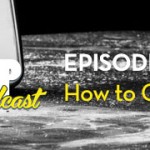Struggling with Insomnia?
When you go to sleep at night you enter a deep sleep cycle known as non rapid eye movement or NREM. This is followed by a dream cycle known as rapid eye movement or REM. The time between going to sleep to the end of the dream cycle varies between 1.5 to 2 hours depending on the individual.
These cycles continue throughout the night so that most people will get between three and four cycles. The first cycle is mainly deep sleep with a little bit of dream and the last cycle is mainly dream. It is assumed that the deep sleep is about body rest and repair and the dream cycle is about emotional rest and repair.
When people become emotionally disturbed the dream cycle eats into the deep sleep cycle. In the extreme people get no rest because they are continually dreaming. The result is that you feel more tired when you wake than when you went to sleep. This often leads to an increasing sleep pattern so that people may end up sleeping for sixteen hours or more each, but getting more and more tired.
This is the most common symptom in all depressive illnesses. For some the sleep state is difficult to enter and although fatiguing it is safe. However some forms of sleep deprivation or insomnia can become life threatening.
Fatal insomnia
The condition occurs when proteins called prions in the brain become misshapen. Similar to CJD they damage the thalamus in the brain. This is the part of the brain that alters systems in the body that induce sleep
The thalamus is linked to the body’s sympathetic nervous system, which controls unconscious actions. It regulates the body’s unconscious actions, including hormone levels, temperature, blood pressure and heart rate. In healthy people, at night, hormone levels alter and blood pressure is dropped to induce slumber. But for those with fatal insomnia, these actions don’t happen and so they remain awake, in a permanent pre-sleep state.
Dream Sleep
If following an emotional disturbance dreams become very vivid and technicolor our rest is lost. When the dreams take over our sleep pattern we are discharged from sleep in the dream cycle and we do not get the rest from the deep sleep that we need. Although we may not remember what we were dreaming about, they still wake us, and unless we quickly write it down they are lost.
The difference between deep sleep and dream sleep is that if we wake in deep sleep we are groggy and may not know who we are or where we are until we orient ourselves. However in this state it is easy to go back to sleep. When we wake in dream sleep we are wide awake as though someone has switched the light on and we find it difficult to go back to sleep.
In this weeks podcast Ed and I talked about insomnia and sleep disturbance and suggest resources that may be of help. Improving and maintaining, your sleep pattern is fundamental to your emotional wellbeing.
Some ways to improve your sleep pattern are…
Do not eat of drink for two hours before you go to bed. Only go to bed to sleep not to read or watch or listen to anything. This creates an emotional association with the bed that it is solely for sleep. Avoid any drinks that include high levels of caffeine or tannin. Get at least half an hour exercise everyday, that means making your heart beat at an exercise rate appropriate to you age and health. Develop deep relaxation or self-hypnosis techniques. Mediate every day for at least twenty minutes. If possible take a siesta or a power nap.
Research suggests, people who have a siesta for about an hour have higher levels of serotonin, the well being endorphin, after their siesta than before. This is also true of the shorter power nap. We now question the emphasis on the Mediterranean diet as to the reason why people there live longer; it may be the effect of siesta as well as the diet.
One last thing using sleeping pills, draughts or drugs serve only to treat the symptom and not the cause. If your sleep disturbance is due to emotional disturbance the most effective cure is psychotherapy.
Take care, live in the present
Sean x




Trackbacks & Pingbacks
[…] Sean wrote a blog post on this subject. Have a read… […]
Leave a Reply
Want to join the discussion?Feel free to contribute!